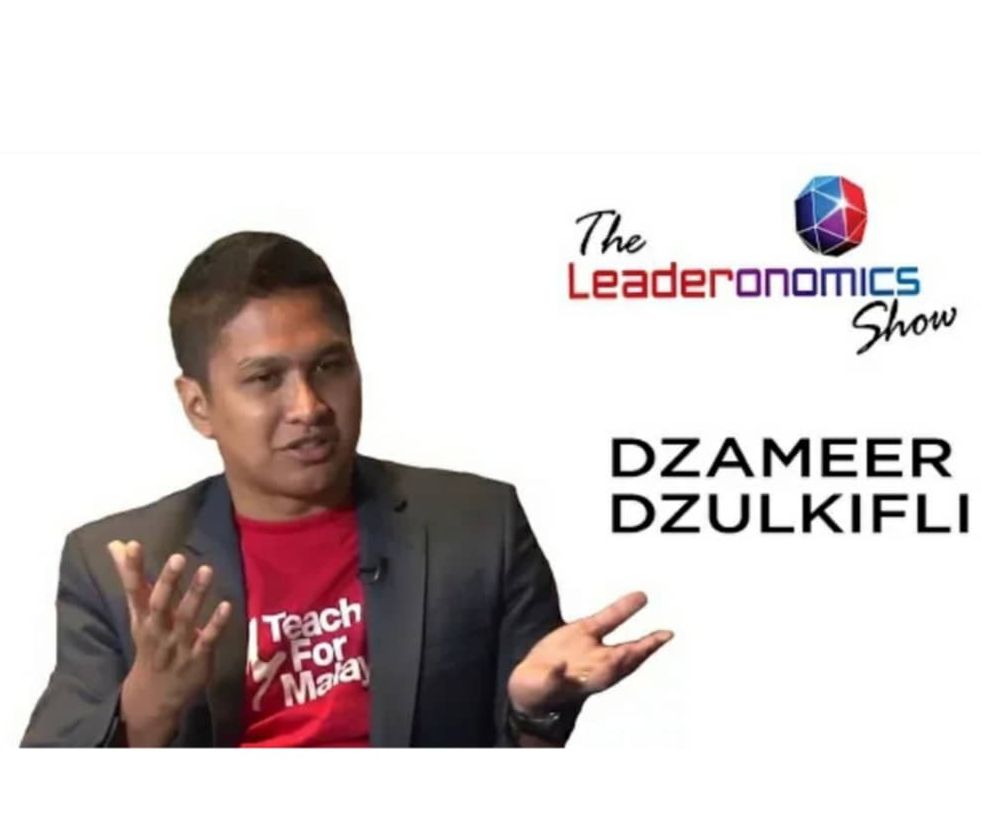The Elements Of Persuasion: Influencing Through Dominance And Prestige

We are status-conscious beings. We constantly observe and compare ourselves to those around us, identifying individuals who have more, or less influence than we do.
Leadership – and the distinction between who leads and who follows – appears universal across human societies. We easily categorise people into ‘leaders’ and ‘followers’ when it comes to groups.
The ability to influence effectively rests at the very core of effective leadership. We are captivated, literally, by individuals who influence effectively.
We are enthralled by the personality, skill, and achievements of effective leaders, and even craft stories around them.
What do Frank and Claire Underwood from House of Cards, Don Draper from Madmen, and Daenerys Targaryen from Game of Thrones all have in common with Apple’s visionary messiah, Steve Jobs?
Jobs was famously known for having vision and foresight. Infamously, however, he was also known for his temper and mercilessness. Jobs’ biographer, Walter Isaacson referred to these two sides of the famous leader simply as ‘Good Steve’ and ‘Bad Steve’.
The ruthless effectiveness of Jobs’ leadership was as much a feature of his legacy, as was the admiration of the people that worked with him.
Like the fictional leaders we see in our favourite television dramas, effective leadership embodies a common theme. The best leaders are able to effectively leverage two key power bases: dominance and prestige.

READ: Influence & Leadership — A Teacher’s Journey
Power base: Dominance
Dominance and prestige are two sides of the same leadership coin. They represent the two central bases for power on which leaders incite or influence change in another’s behaviour.
Leaders who base their power on dominance influence others by exerting threats, coercion, forcefulness, or even aggression and physical intimidation towards their targets.
You can think of authoritarian, “Do as I say, or else” bosses as examples of leaders who lead by dominance. These leaders also often rely on formal authority and official rank as a means of influence.
Dominance-focused leaders tend to rely on their ability to mete out punishment and threats, or their ability to offer desired rewards to followers who willingly fall in line.
It should perhaps come as little surprise that while such leaders can command a following, they do so in a rather transactional manner. Dominance-based leaders lead by fear and forcing compliance from their followers.
Dictators, tyrants, and leaders adopting autocratic styles of leadership are examples of leadership by dominance; from historical figures such as Genghis Khan, to your corporate boss from hell that resembles Miranda Priestly from The Devil Wears Prada.
Power base: Prestige
In contrast, leaders who base their power on prestige influence others primarily on the basis of knowledge, expertise, personal respect, and deference.
Compared with dominance-based leaders, prestige-based leaders rely primarily on informal authority. This informal authority may be based around specialised skill, connections to powerful parties or stakeholders, or even personal qualities and ideals.
While intangible, these qualities and resources are valued by followers and targets of influence.
The one key distinction that separates a dominance-based leader from a prestige-based one, however, is that willingness to follow a prestige-based leader is freely conferred.
Followers willingly follow prestige-based leaders, when they may only begrudgingly do so with a dominance-based leader. Followers may even aspire to be like their leader, making admiration, respect, or hope – not fear – the guiding emotion for prestige-based leadership.
Martin Luther King and former United States president Barack Obama are typically referred to as good examples of leadership by prestige; personal magnetism and charisma exemplify this form of leadership.
It’s never one or the other
Dominance and prestige, are, however, not mutually exclusive. Effective leaders know when to lean more towards one approach over the other depending on the demands of the situation.
Perhaps the ability to alternate and decide which side of the leadership coin to flip to is most important in the context of persuasion, negotiation, and conflict resolution.
When leaders lead negotiations in complex make-or-break situations with competing organisations, for instance, their ability to use dominance and prestige strategically becomes an integral factor in determining the negotiation outcome.
Understanding these two power bases also raises an important consideration for aspiring leaders, or those who are subject to the leader’s influence – individuals without formal authority can still be influential. One can lead and influence – despite not having the formal title of ‘leader’.
Dominance, prestige, and the politics of influence
The commonly-referenced Thomas-Kilmann model suggests five ways in which parties can negotiate and attempt to persuade the other.
The model lists five different strategies, depending on the extent to which one wishes to emphasise the issue at hand, or the relationship with the other party.
When should leaders use each approach? Well, it really depends on the nature of the conflict situation, and the dominance or prestige power bases you currently possess.
Negotiation, persuasion, and conflict resolution, in this sense, seems like a careful, calculated, and deeply strategic game of cards – one that involves both parties playing multiple rounds, and deciding whether to use a dominance card, or a prestige one.
Avoiding
Avoidance of the situation and opposing party can be used when the issue is of minimal importance, trivial, or when it would be cost-ineffective and time-consuming to resolve.
This strategy is used if one has generally low concern for the task, and low concern for the relationship with the opposing party.
If engaging with the opposing party is likely to result in a worse outcome or net loss for both, then discretion may be the better part of valour.
In this case, the situation is kept at a status quo; both parties avoid playing any of their dominance or prestige cards against the other.
Avoidance may also be a prudent decision if you know that the opposing party holds more cards than you do, or if showing your hand too early on will quickly, or permanently, place you at a severely disadvantaged bargaining position.
Effective leaders and negotiators may choose to avoid the situation if it allows them to accumulate better resources – to acquire a better hand, so to speak – before attempting any form of negotiation with the opposite party at a later time.
Accommodating
When you value the relationship with the other party, and the primary concern would be to maintain or enhance ties with other, then accommodating is the preferred negotiation strategy.
Accommodating works particularly well if the other party values the relationship as much as you do, and can be trusted.
This approach can also be used when conceding now can result in a comparatively more favourable pay-off later on.
Accommodating essentially builds prestige-based relational resources, signalling to the opposing party that you wish to deal further with them in the future.
Expressing generosity and conceding conveys empathy and compassion, but may also strategically be used to signal control over the situation.
Accommodating conveys a trade of dominance for prestige, and yet, unbeknownst to the other party, the conceding party could still be holding a very powerful hand.
Forcing
Forcing is an approach used when the primary concern is the substantive outcome of the negotiation.
A hardball tactic, forcing is persuading by playing a dominance card. Forcing the situation is a viable strategy to limit potential future losses.
Leaders might use forcing under circumstances where the other party cannot (or should not) be trusted, or when the opposite party is likely to exploit concessions or take advantage of accommodating tactics.
This dominance-focused tactic also works better when you have access or control of resources places – you are in a comparatively advantageous position relative to that of your negotiation counterpart.
As such, forcing tends to work better when the other party believes that you have a better hand than they do.
In negotiation terms, the expression used is having a strong BATNA (Best Alternative to Negotiated Agreement), where you can walk away from the negotiation table and suffer little to no repercussions.
Playing the forcing card asserts control and establishes limits, and is associated with emotions such as anger and disappointment.
Some research studies show that negotiators get better deals when they express anger, than when they express positive emotions while negotiating.
Compromising
A middle-of-the-road strategy, compromising on the situation is a viable, temporary stop-gap measure for when the negotiation scenario becomes excessively heated or emotional.
Compromising also works for when one has moderate levels of concern for the issue and relationship. You can think of compromising as a ceasefire strategy to prevent further escalation of conflict.
When compromising, both parties acknowledge that neither has a good hand, or suspect that both their hands are equally matched. In such gridlock situations, contributing to the pool does little to change either party’s perceptions of dominance or prestige towards the other.
Compromising can be used to buy time before the next round of negotiations, and is associated with perspective-taking, empathy, and caution.
Collaborating
Collaborating is an approach for negotiating stand-offs, complex issues or situations that are high in degree of importance, and with potentially major outcomes for both parties.
Both the task and relationship in such situations are highly valued.
Collaborating is also more viable when the negotiating leader has both the time and resources to discuss alternatives and explore pathways that mutually benefit both parties.
Out of all the approaches, collaborating is the only one that results in a win-win outcome. Both parties preserve, if not enhance their dominance and prestige from having negotiated the outcome.
Both parties play their cards and end up walking away with more money than they invested in the first place.
Doesn’t this violate the rules of the card game? No – the game was never zero-sum to begin with.
Negotiations, unlike competitive games, don’t always need to end with a clear ‘winner’ and ‘loser’. Collaboration involves ‘enlarging the pie’ – expanding the range of outcomes so that both parties can win.
Effective leaders know that unlike zero-sum games, negotiation systems and conflict situations can themselves be gamed – resulting in win-win outcomes.
A summary of the negotiation tactics, depending on the power base and situation, is provided in the following table:
| Use Avoiding when… | Use Accommodating when… | Use Forcing when… | Use Compromising when… | Use Collaborating when… | |
| Power Base | …the opposing party has more dominance and/or prestige than you. | …trading dominance for prestige will likely lead to an optimal outcome. | …trading prestige for dominance will likely lead to an optimal outcome. | …you and the opposing party are evenly matched on dominance and prestige. | …both parties have dominance and prestige resources for prolonged negotiation. |
| Situation | …the situation is of minor or trivial concern. | …you value the relationship with the other party over the substantive issues of the negotiation. | …the other party cannot or should not be trusted, or if the situation is a win-at-all-costs confrontation. | …you need more time to gather influence or information regarding the situation. | …the situation is complex, and it’s important that a mutually-beneficial resolution is reached. |
| …attempting to resolve the situation will lead to a worse outcome than if you ignored it. | …you can afford to give up some dominance and still maintain the upper hand in the situation. | …you are in a better position relative to the opposing party, and have access to favourable alternatives. | …the situation is at a gridlock and using either accommodating or forcing will escalate the situation. | …both parties have the time, and are willing to seek a mutually-beneficial outcome. |
A guide to persuading and influencing
When it comes to persuading and negotiating, the card game analogy works as a general guide to deciding which strategy to use – given the nature of the situation, and the cards you hold on hand.
Here are some tips on influencing more effectively.
Identify your power bases
Are you someone who relies more on dominance or prestige as a means of leading and persuading others?
Identifying the dominance and prestige cards you have on hand is an essential first step in knowing how much negotiation latitude (i.e. power) you have.
Fortunately, the ability to influence does not rely solely on dominance. Remember that formal authority and titles don’t always make a leader influential.
If you are in a position where you can leverage on informal sources of power – say, by having some specialised skill, expertise, or strong relationships with powerful others, then you can do so to compensate for having relatively lower formal power.
Build your prestige
If you had to choose to emphasise one power base over the other, choose to build and accumulate prestige.
Studies suggest that prestige-based leadership provides a stronger, longer-lasting basis for influence than dominance-based leadership.
While dominance-based approaches may be more effective in forcing compliance in the short-run, they are often damaging to the influence potential and reputation of leaders in the long-run.
Dominance-focused leadership also tends to inhibit follower trust and commitment relative to prestige-based leadership. Dominance without prestige is oftentimes indistinguishable from tyranny.
Understand the situation as best you can
Negotiation and persuasion attempts often fail because both parties lack a sufficient understanding of the situation.
You may not be able to gain a complete understanding of the situation; the other party’s hand is often all but concealed to you.
In some instances, it may pay to adopt a ‘wait-and-see’ strategy, to compromise while collecting additional information.
Doing so helps optimise your next negotiation or persuasion move.
Acting without fully understanding the nuances of the situation may instead result in impulsive decisions, escalating tensions, and animosity between the negotiating parties.
Determine the optimal outcome
What’s the ideal outcome from this negotiation? Is a win-win situation possible?
If a mutually-beneficial outcome can be obtained, both parties might explore this possibility, and adopt a collaboration approach when negotiating.
Of course, there will be times when leaders need to force compliance, or concede, resulting ultimately in a win-lose outcome.
Some complex conflicts can be long-drawn out and take years to resolve. For such situations, regular early concessions – ideally from both parties – may be necessary initial steps to take towards an optimal resolution.
Match your power base with the nature of the situation
Once you have understood the dominance and prestige cards you have on hand, have as much information on the situation as you possibly can.
Determine the optimal outcome from this negotiation situation, and then (and only then) make your move.
Tying it together
Considering these factors makes the negotiation situation seem more like a strategic, calculated effort – and many times it is.
Negotiation and persuasion are essential skills for every leader, and with a little more mindful deliberation and strategising, we can all develop better ways to influence more effectively.
Hopefully for the greater good.
Leadership
Tags: Be A Leader
Dr Eugene YJ Tee is presently Professor at the Department of Psychology, HELP University. He holds a PhD in Management from the University of Queensland and a Master's of Applied Positive Psychology from the University of Pennsylvania. He is the author of four books – “Of Bromances and Biting Cute Babies”, and “Mindfulness and Emotions,” "The Science of Feelings" and "The Tyranny of Speed". Eugene is also a Mindfulness-Based Strength Practice Certified Practitioner and a Reflected Best Self Exercise (RBSE) Certified Facilitator. He divides his time teaching at the university and engaging with the general public in his science communication efforts, focusing on emotional intelligence and positive psychology.






